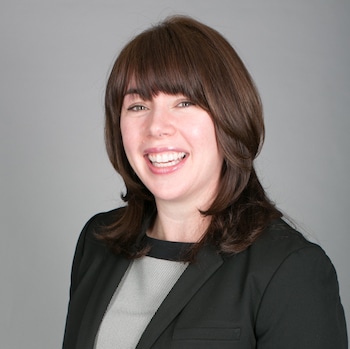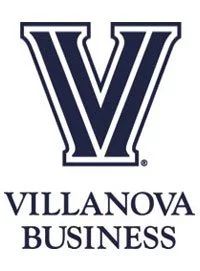The Q&A—on Career Advancement
 With Villanova University’s Rita DiCarlo
With Villanova University’s Rita DiCarlo
“I wish I would have been told to say ‘yes’ as much as possible and figure out the “how” later.”
Q: You are in the business of helping college students achieve their career goals. What are your top tips that apply at any point in a woman’s professional career?
Two tips that I believe are relevant across a woman’s entire career journey are:
- You control and manage your professional brand
- In order to be successful in the job search process, you must put in the work
The ability to develop and manage your professional brand is applicable at every point in a woman’s career. You build your professional brand in obvious ways, from having a comprehensive LinkedIn profile, to developing a tailored resume.
However, you are also building this brand every day. Even day-to-day activities can be critical in how you are perceived. These include how you show up to work. Do you follow through on your commitments? How do you operate in meetings? Do you provide constructive recommendations, or are you always voicing negative opinions? It is important to be thoughtful and self-reflective about your communication style, work ethic, and attitude, all of which have a cumulative effect in the creation your brand. You should also solicit feedback to truly understand how you are being received by your colleagues.
My other tip is that research and preparedness go a long way, regardless of whether you are early in your career or at a more senior level. I am often surprised when candidates are woefully unprepared for the job search and interview process. There is research to be done, from the identification of top companies within a sector and region to understanding recruiting channels and protocols.
These are the obvious ones, but you also need to understand the internal culture and assess the strategy and future vision of the organization if you are considering a career transition. Using LinkedIn and other professional networking platforms such as Villanova’s Nova Network to run a search and speak to a contact that has or is currently working for a specific company. This is a simple way to gain valuable insights, assess fit and best prepare for the interview and negotiation process.
Q: When people talk about career advancement, they often talk about goal-setting, networking and mentoring. What do you think are some commonly overlooked strategies?
There are several active tactics that can be overlooked when professionals consider career advancement strategies. One is conducting an individual SWOT analysis to identify existing strengths and weakness as well as opportunities and threats. The focus here is to best understand where you stand when comparing your current candidate profile against the next aspirant role. Although many employers may provide some level of insight into their employees’ capabilities during the review process, this is still an important individual exercise as we are not always thinking about our current role but our next transition. Leveraging qualifications and criteria from job descriptions can be helpful to best understand how to enhance your candidate profile before the next job search.
Additionally, professionals need to cultivate relationships and develop internal sponsors within their organizations. The idea of mentoring has been front and center with many companies, and a linchpin in career advancement strategy. However, relying on a mentor is not enough. There is a strong need to also identify sponsors. Sometimes mentoring and sponsorship seem synonymous, when in fact they are very different.
Mentors can provide guidance and support whereas sponsors can create tangible opportunities. Sponsors can be cultivated in various departments, levels, and roles; these individuals are there to advocate for you to be added to projects, committees, and generally ensure you are front of mind when you are not in the room. It is important to have guidance and support to help prepare you for career growth, but developing sponsors is the next step in gaining traction in your organization.
Q: How have the rules of career advancement changed over the past 10 years?
One rule of career advancement that has changed is the stigma around “job hopping.” This was a major concern for job seekers in the past. However, rapidly changing technology and corporations offering more flexibility has led to a more recent shift in perception.
As a result of advancements in technology, what was once antiquated recruiting processes utilized by countless companies has evolved over the last decade to focus on generating more efficiencies and improving the overall candidate experience. This transition has included the adoption of more sophisticated ATS (Applicant Tracking Systems,) chatbots, and the creation of a myriad of job boards and aggregators. The ease of identifying opportunities allows for more mobility options for job seekers looking to accelerate their career growth.
Companies are striving to meet the demand for more flexibility, as well. From remote work options to dress codes, we see organizations trying to create new classifications and structures at work to adapt to the changing gig economy. I feel this focus on flexibility helps change the preconceived ideas of a “cookie-cutter” candidate profile, which further negates the earlier concerns about frequency of career transitions. Many companies are now focused on how a candidate with a vast tool kit of skills can add value and diversity to their organizations.
Q: How does gender affect career advancement? Are there specific strategies you would emphasize as important for women?
Research suggests gender does impact career advancement for women. One tangible example is around the initial job search process. It is documented behavior that a large percentage of female job seekers feel they must meet a much higher threshold of qualifications listed before applying as opposed to male applicants.
This creates an inequity around career promotion and advancement that also correlates to the gender salary gap. One suggestion for women around this process is to better assess transferable skills. These skills may not directly align but would add value and allow a female job seeker to feel more prepared to stretch into a role.
I think another critical factor for improving this gap is for women to participate in trainings around negotiations. Becoming more familiar with tactics would put female candidates in the best position to increase starting salaries and improve the entirety of the offer package.
Q: If there was one career advancement tip that you wish you had heard when you started out in your own career, what would that be?
I wish I would have been told to say “yes” as much as possible and figure out the “how” later. It seems simple but can be challenging not to put up roadblocks and focus on our own deficits and vulnerabilities.
Should I say yes to:
- Projects that are not in my wheelhouse?
- Traveling to conferences across the county?
- Taking a leap for a new role and moving out of my comfort zone?
I have started saying yes more and determining how to execute later. In my experience, saying yes creates more opportunities, demonstrates your flexibility, and has positive outcomes. Working with job seekers, I often talk about how just showing up can create new opportunities, and the same can be said for saying yes. Therefore, trust that there is reason someone is presenting you with an opportunity, say yes, and stop standing in your own way on the path to success.
Rita DiCarlo has more than 15 years of experience as a career services practitioner, empowering students to achieve their career goals though one-on-one coaching and program development. Rita completed her undergraduate and graduate degrees at Drexel University and currently holds the role of Associate Director for Graduate Career and Professional Development at the Villanova University School of Business.
Sponsored by
 With Villanova University’s Rita DiCarlo
With Villanova University’s Rita DiCarlo 